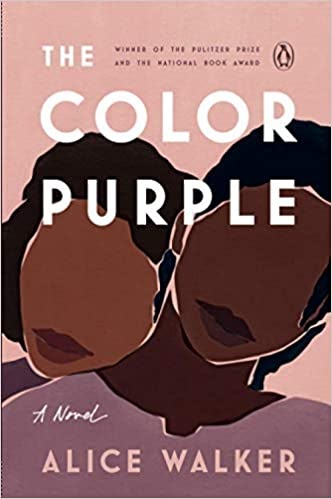Is It Worth the Read: The Color Purple

Image courtesy of amazon.com
By Caroline Morris
Okay, I’ll say it: I typically find epistolary novels boring. For those who don’t know, epistolary novels are novels told through letters or journal entries written by the book’s characters. Oftentimes, this style can be tedious and unbelievable because reading pages and pages of letters can drag and lack action, but Alice Walker’s use of it in The Color Purple is a revelation.
Released in 1982, The Color Purple has definitely become an instant classic, having since been adapted into a movie (1985) and a musical (2005). But when a piece of work has been adapted and become known so widely in its adapted forms, it is always worthwhile to go back to the source and see what the author intended for the work in its purest form.
The novel follows Celie, a young Black girl living in a small town in Georgia in the early-to-mid 1900s. Walker, however, does not use a narrator or even a traditional first-person perspective to achieve this point of view. Rather, she uses Celie’s letters to tell the story, with a twist: Celie’s letters are addressed to God.
This stylistic choice alone makes The Color Purple worth reading. The epistolary form allows the audience to understand Celie’s sense of self-worth and mental state through the style and quality of her own writing, which is key to this novel’s character-oriented plot. Additionally, making the choice to storytell via letters supports a first-person narration that includes reflection, which is an extremely useful tool. When writing in first-person, an author must justify why the character is telling the story of what they have experienced. By using letters, it not only justifies the telling but also grounds a more reflective recounting of the story that is not always possible in the present tense.
What is most innovative about this style is the address to God. The theme of faith and religion is quite significant in this novel, so foregrounding these letters as a form of prayer immediately establishes that theme and signifies the importance of a “God” in this narrative. This is also paired with the reality that a relatively uneducated black woman is attempting to write, a skill that has been stunted due to life’s circumstances. By bringing these two realities of religion and education together, Walker creates a style that allows a clear window into the mental and emotional state of Celie, whose journey of self-growth is the main conceit of the novel.
Though one of the most compelling aspects of The Color Purple is the long-term character development—the novel spans about 30 years—it also has certain plot elements that keep the audience engaged beyond the emotional investment in the characters. Walker balances big-picture twists and changes within Celie’s family and her state of life among smaller, more intimate shifts among the immediate characters that evoke the subtle change in day-to-day life. The novel also illustrates the harsher realities that the characters in this Black community face, both externally and internally, with conflicts of violence, racism, sexism, and abuse underpinning the entire book.
The aspect of The Color Purple that is simultaneously one of the most affective and often misunderstood parts of the novel is Celie’s love and sexuality. Celie is undeniably a character who has suffered greatly, and the novel is very explicit that much of that trauma was sexual. However, her struggle with her body and sexuality is not solely based on this violence or the lack of love she has lived with—she is also clearly a lesbian woman.
Without divulging too much of the novel’s masterfully written progression of Celie’s sexuality, it is quite clear that she is lesbian. Not only does she never express any feeling of desire for a man and describes her forced sexual encounters with them as though the man was using the bathroom, the only times she experiences sexual desire is because of a woman. Walker also includes an obviously lesbian scene in which Celie and another woman physically engage and wake up spooning.
Though the novel never includes the words “gay,” “lesbian,” or “homosexual,” it clearly aims to make Celie’s sexuality apparent. Walker writes a scene between Celie and another character named Albert to verbalize this truth interpersonally.
“He say, Celie, tell me the truth. You don’t like me cause I’m a man? I blow my nose. Take off they pants, I say, and men look like frogs to me. No matter how you kiss ’em, as far as I’m concern, frogs is what they stay.”
This analogy quite obviously shows that Celie does not find herself attracted to men, despite a few consensual attempts to find pleasure in the male body earlier in the novel. This quote also comes from the end of the novel, after the audience has seen Celie’s love affair with woman progress.
Despite all of this clear evidence of a queer main character whose journey of interpersonal and self-love—which are inherently tied together—this aspect of this story has often been missed or misinterpreted and has even caused controversy. However, if a reader is willing to take the book as it is, they will find this plot point to be both extremely visible and extremely moving.
The Color Purple is a novel that pulls the reader in immediately through Celie’s compelling voice and holds onto them; they’ll need to watch as she fights to thrive in a world that is built to stunt her. With an ending that is ultimately quite happy without feeling cheesy and unearned, The Color Purple is definitely a modern classic that balances life’s brutality and hope and that everyone should read, even if you have already seen the movie or the musical.






